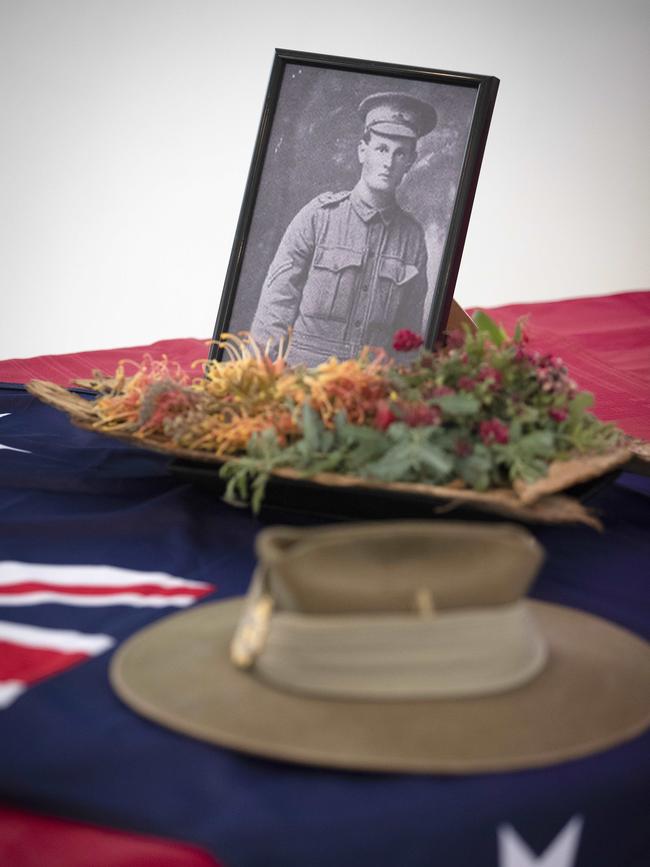War wounds: Labor ‘betrayal’ undercuts search for lost World War I Diggers’ graves
Labor has been accused of gutting programs to commemorate unmarked graves of 12,000 World War I veterans across Australia despite pledging to maintain funding before the election.

Labor has been accused of gutting programs established to locate and commemorate unmarked graves of 12,000 World War I veterans across Australia after pledging to maintain funding levels for landmark headstone projects 10 days before the election.
The Australian can reveal funding levels and the number of graves identified have plunged since the 2022 election after the government made it more difficult for community groups to access financial support.
In response to a question on notice from the Coalition, the Department of Veterans’ Affairs confirmed that only 42 veterans’ graves had been recommended for grants under Labor’s first round of applications held between April and August last year.
During a pilot program operated under the Morrison government between 2019 and 2021, 1189 out of 1216 unmarked graves were identified and marked.
After the Coalition announced an extra $3.7m in the lead-up to the 2022 election, Labor matched funding commitments for the headstone project to “mark the private graves of around 12,000 First World War veterans who died after the war and are resting in civilian cemeteries”.
In Labor’s first budget, $1.5m was allocated for a new grants program. In its question on notice response dated February, the DVA breakdown for service delivery costs over the forward estimates was $828,440.
Tasmanian Headstone Project chair Andrea Gerrard said a combination of “bean counters” and additional layers of rules and regulations meant “we are barely any better off, if not worse off”.
It is estimated about 30,000 of the 271,800 service men and women who returned from World War I were officially commemorated after their deaths were directly linked to their war service.
At least 12,000 of the remaining 240,000 who were buried privately are believed to be resting in unmarked graves because of a range of economic and social circumstances.
World War I veterans including Sapper Andrew Neasey, Sapper Walter Purton, Lance Corporal Joseph McSorley and Private Edward Grundy have had new headstones laid in Tasmania in recent years.

Ahead of Anzac Day on Thursday, Ms Gerrard said “every time we have a meeting I say ‘for those who have served this country in times of war and peace … lest we forget’ … It’s all of them who served, not just the ones who died on the battlefields.
“It’s important that all of these men are recognised, not just a few,” Ms Gerrard said.
A key concern for stakeholders is allocated funding being directed to a grants hub, and administrative costs.
Ms Gerrard, who acknowledged the work of those in DVA to support the program, said “the time lag is much longer than it used to be … it’s a real struggle”.
“(We need) faster processes to speed-up what they do. There are days when I get frustrated. I think the $3.7m needs to spent on these graves and not part of that going to the grants hub and propping the grants hub up because that’s morally wrong,” she said.
A DVA spokesman said the government was committed to its First World War Marking Private Graves Program, which replaced the Coalition’s pilot program in 2022. “There has been no funding cut to the grants provided by the program to the Australian community, rather cost savings have been identified in the administration of the program by the department,” the spokesman said.

“The 1189 graves marked were part of a pilot program where graves of First World War veterans were provided an official commemoration regardless of whether the veteran’s death related to their war service. This program was not extended as there is no constitutional authority under which the department may conduct the program.
“The marking of private graves is complex and sensitive. While well-meaning individuals or community groups may correctly identify the grave of a First World War veteran, the government must balance this with what may have been the family’s intent and wishes for the grave of their loved one.”
Opposition veterans’ affairs spokesman Barnaby Joyce said it was an “utter disgrace” that the government was “delivering $800,000 from a promise of $3.7m”.
“It’s not even half the promise. I think we can find the remaining $2m to help name the graves of the over 12,000 ex-servicemen who lie anonymous in graveyards across our nation,” Mr Joyce said.
“We say lest we forget. But beyond lest we forget is we didn’t even know. And when it comes to unmarked war graves, not only have we forgotten, but we didn’t even know who was there,” Mr Joyce said.
“The Labor Party made a promise to these people that they would apply plaques to the unmarked graves. They said they would continue a program that gives a name to a patch of grass or dirt under which lies the body of a person who served our nation.
“Those men didn’t break a promise. So surely the government should have the decency to honour theirs.”
Additional reporting: Jordan McCarthy







To join the conversation, please log in. Don't have an account? Register
Join the conversation, you are commenting as Logout